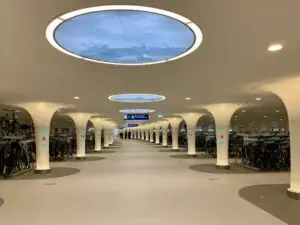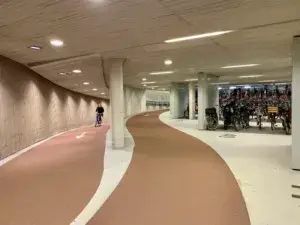Mobility and Infrastructure
In the Netherlands, mobility is characterized by a strong emphasis on sustainable modes of transportation, such as public transport and cycling.
Infrastructure is everywhere in Holland. In fact, the entire country can be seen as one big infrastructural project. The Netherlands have a highly developed bike and public transport infrastructure. The bicycle is one of the most popular modes of transportation. In Dutch cities, bike infrastructure forms a continuous system, pervading the entire city fabric and reaching out into the countryside. The Netherlands are renowned for their extensive networks of bike lanes and bike-friendly infrastructure, which have made cycling a safe, convenient, and attractive option for people of all ages and abilities. This has not only helped to reduce carbon emissions and improve air quality, but it has also contributed to a more active and healthy population. The Dutch government has also introduced several initiatives to encourage cycling, such as providing subsidies for electric bikes and implementing traffic calming measures to improve safety. Public transport is another cornerstone of sustainable mobility in the Netherlands. The country has a highly integrated and efficient public transport network that includes trains, buses, trams, and metros. On an average weekday, 1,3 million people commute between cities by train. Accordingly, the system is so dense that it resembles a large-scale metro network. The OV-chipkaart is a smart card that can be used on all forms of public transportation in the Netherlands. Find out more during one of our tours!
Architecture Tours on Mobility and Infrastructure
Not what you’re looking for? Contact us for a customized tour proposal!


